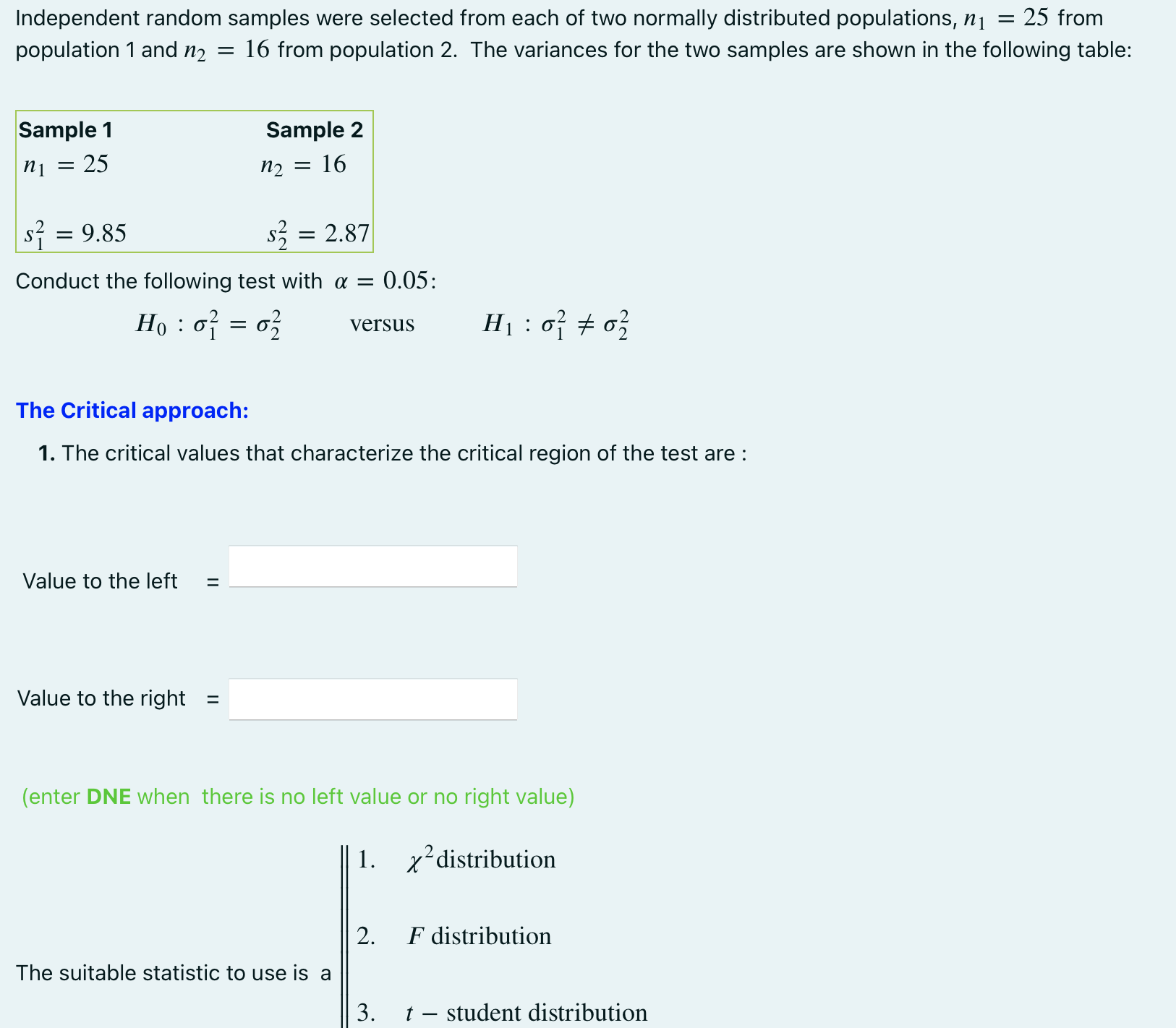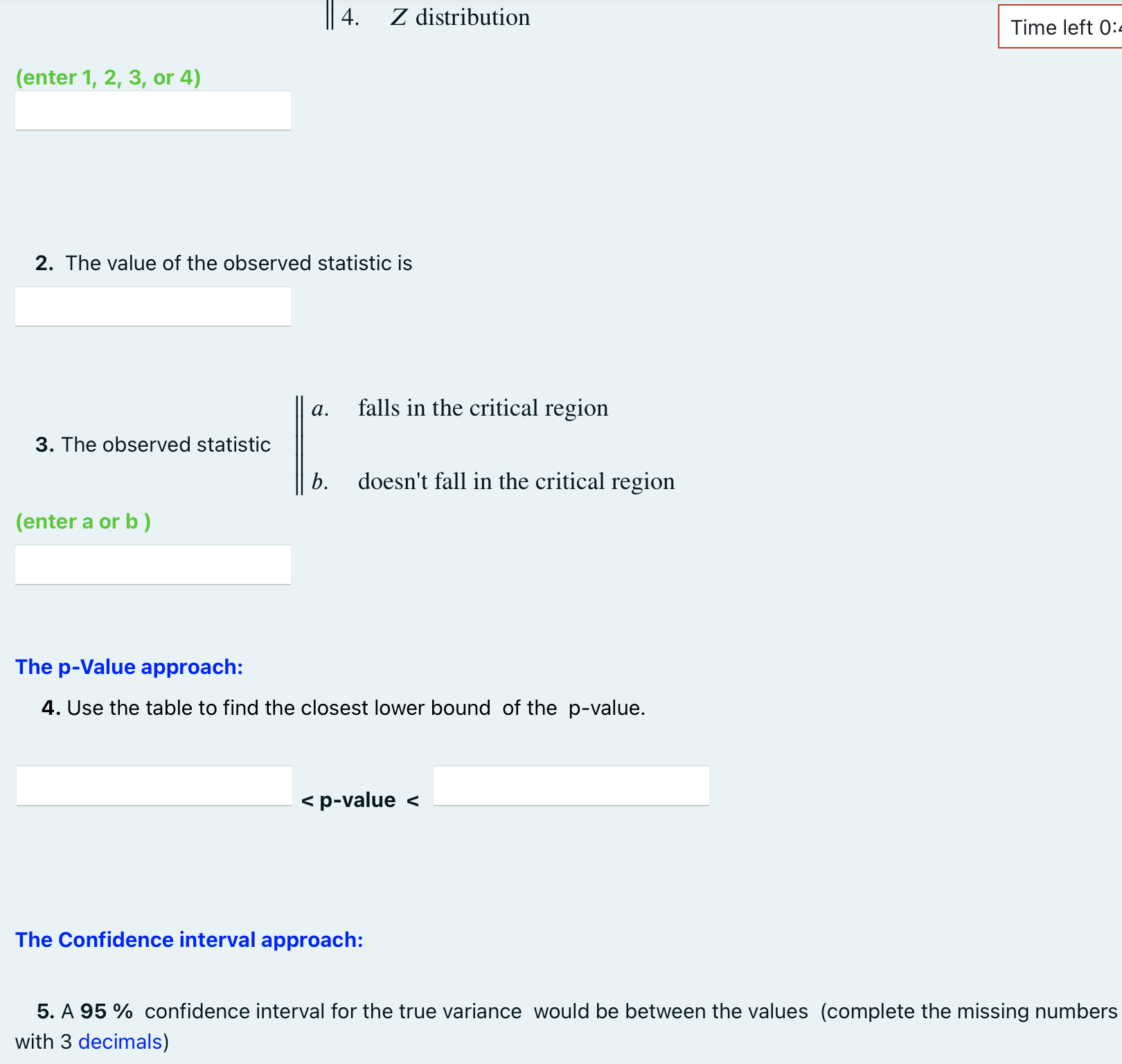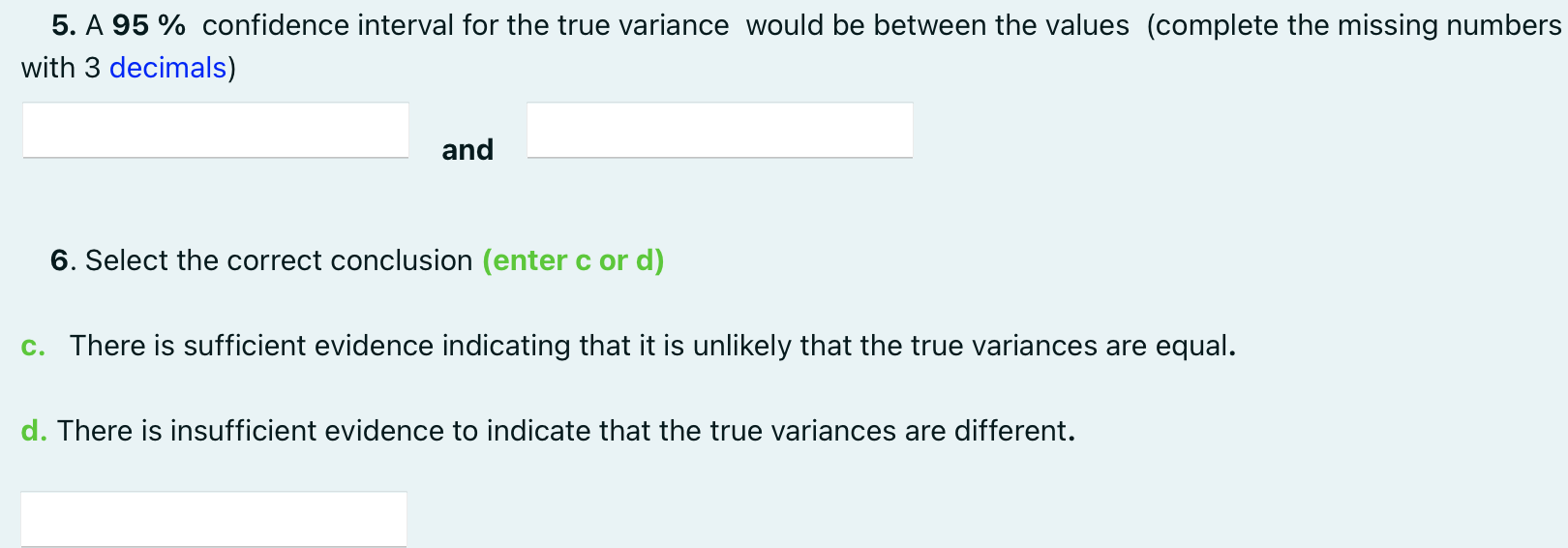Answered step by step
Verified Expert Solution
Question
1 Approved Answer
Independent random samples were selected from each of two normally distributed populations, n = : 25 from population 1 and n 16 from population



Independent random samples were selected from each of two normally distributed populations, n = : 25 from population 1 and n 16 from population 2. The variances for the two samples are shown in the following table: = Sample 1 n1 25 $ = 9.85 Sample 2 n = 16 s = 2.87 Conduct the following test with = 0.05: H = 0 versus H 0 % 0 The Critical approach: 1. The critical values that characterize the critical region of the test are: Value to the left = Value to the right = (enter DNE when there is no left value or no right value) 1. x distribution 2. F distribution The suitable statistic to use is a 3. t - student distribution (enter 1, 2, 3, or 4) || 4. Z distribution Time left 0:4 2. The value of the observed statistic is a. 3. The observed statistic (enter a or b) falls in the critical region b. doesn't fall in the critical region The p-value approach: 4. Use the table to find the closest lower bound of the p-value. < p-value < The Confidence interval approach: 5. A 95% confidence interval for the true variance would be between the values (complete the missing numbers with 3 decimals) 5. A 95% confidence interval for the true variance would be between the values (complete the missing numbers with 3 decimals) and 6. Select the correct conclusion (enter c or d) c. There is sufficient evidence indicating that it is unlikely that the true variances are equal. d. There is insufficient evidence to indicate that the true variances are different.
Step by Step Solution
There are 3 Steps involved in it
Step: 1

Get Instant Access to Expert-Tailored Solutions
See step-by-step solutions with expert insights and AI powered tools for academic success
Step: 2

Step: 3

Ace Your Homework with AI
Get the answers you need in no time with our AI-driven, step-by-step assistance
Get Started


